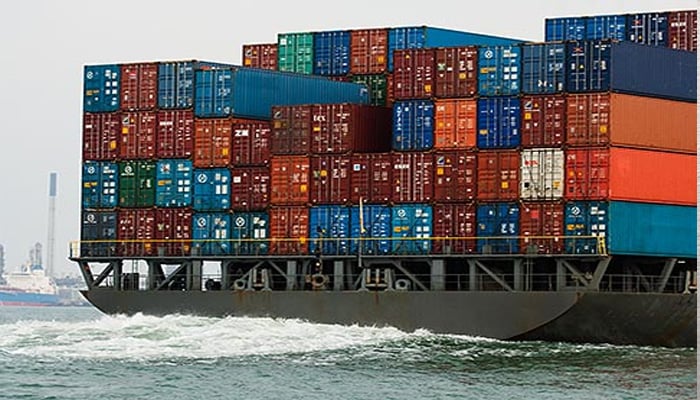Policy shift must to get rid of Pakistan’s export woes
LAHORE: Pakistan’s export woes are not new, and as compared with regional economies, the country has performed poorly in exports during the last 25 years. To change the situation, it is the need of the hour to provide the same incentives to all sectors as was done by India.
Since 1992, exports from Bangladesh and India increased 17 and 15 times, respectively, whereas from Pakistan the exports went up by only three times. Unfortunately, Pakistan’s export culture has not fully developed yet. In 1992 the exports of Bangladesh were $2.098 billion. During the same period exports from Pakistan totalled $7.3 billion that was over three times the exports from Bangladesh.
Indian exports in 1992 stood at $19.628 billion, a little less than three times Pakistan’s exports. At that time, textiles were the main exports of all the three countries. Bangladesh, during the preliminary stage exported only value-added textiles; India exported both value-added and basic textiles, while Pakistan’s exports were mainly from the basic textile sector.
The data quoted in this article has been retrieved from the World Bank. Twenty five years later in 2017, exports from Bangladesh increased to $35.965 billion. India’s exports reached $298.376, while Pakistan managed exports worth $21.569.
Bangladesh is still in value-added textiles, graduating to high value garments. It is the second largest exporter of garments after China. Textiles account for around 60 percent of its exports, half of which are low value-added basic textiles.
India has graduated out of textile dominance in the last 25 years and has diversified its export products. It is a major exporter of IT services, auto-parts, pharmaceuticals and light engineering goods. The share of textiles in its exports has reduced to 16 percent.
The 25 years journey of three close neighbours shows that exports increased constantly in India and Bangladesh but were inconsistent in Pakistan.
The exports of Bangladesh more than doubled during 1992-97 period from $2,098 to $4.842 billion. Indian exports that were $19.628 in 1992, which increased to $35.437 billion in 1997. In 1992, Pakistan’s exports were $7.3 billion that inched up in the next five years to $8.47 billion.
This reflects that either there was flaw in government policies or the private sector in Pakistan was lethargic and looked towards the government for subsidies. Growth in Pakistan exports matched that of Bangladesh from 1998-2003. Bangladeshi exports reached $6.990 billion in 2003, while India’s jumped to $58.93 billion.
Pakistan’s exports increased to $11.53 billion, an increase of over $3.5 billion compared with the increase of only $1.1 billion in the previous five years. The next five years saw phenomenal export growth.
Bangladesh’s exports reached $15.37 billion in 2008 that was 2.5 times higher than exports in 2003. Exports from India increased threefold to $194.828 billion. Pakistani export growth, though less than its two neighbours, almost doubled to $20.323 billion.
The constant increase in the exports of India and Bangladesh was at the expense of Pakistan.
India while excelling in other sectors also continued to increase its value-added textile exports, and Bangladesh was exclusively in value-added garments. Pakistan predominantly depended on low value-added basic textiles.
By 2013 Bangladesh was well ahead of Pakistan in exports. Against Bangladeshi exports of $29.114 billion, Pakistani exports were $25.121 billion. This was the first year since 1992 that Bangladesh overtook Pakistan in total exports. Indian exports in the same year reached $314.848 billion.
In 2017 the exports from Bangladesh reached $35.96 billion, Pakistan exports dropped to $21.569 billion, and Indian exports eased to $298.37 billion. An interesting point in this regard is that from 1992 except one year till date, Bangladesh always registered growth in exports.
There have been ups and downs in exports from India, but exports from Pakistan have always remained unstable – going up for a year or two and then coming down. The notion that Bangladesh surged ahead after easing of textile quotas in 2005 is not true as this country was showing constant growth in exports in the previous 13 years.
If we analyse Pakistan’s export performance, it would be found that we never diversified our exports like India, and remained textile centric. Despite giving importance to textiles in our trade policies, we ended up exporting the lowest value-added textile, while Bangladesh that started almost 40 years later in textiles, has overtook us. A country like Pakistan needs a transparent export policy that provides the same incentives to all sectors.
-
 EBay Launches First Climate Transition Plan, Targets 'zero Emissions' By 2045
EBay Launches First Climate Transition Plan, Targets 'zero Emissions' By 2045 -
 Rihanna To Announce Music Comeback And UK Stadium Shows
Rihanna To Announce Music Comeback And UK Stadium Shows -
 Tish Cyrus Calls Post-divorce Period 'roughest' Time Of Her Life
Tish Cyrus Calls Post-divorce Period 'roughest' Time Of Her Life -
 Prince Harry Turns To Hands-on Fatherhood As ‘crippling Social Anxiety’ Get Choke Hold
Prince Harry Turns To Hands-on Fatherhood As ‘crippling Social Anxiety’ Get Choke Hold -
 Pete Davidson Launches New Talk Show From His Garage
Pete Davidson Launches New Talk Show From His Garage -
 US To Suspend Immigrant Visa Processing For 75 Countries: Know All Details
US To Suspend Immigrant Visa Processing For 75 Countries: Know All Details -
 Ariana Madix And Tom Sandoval Settle Legal Dispute
Ariana Madix And Tom Sandoval Settle Legal Dispute -
 Travis, Jason Kelce React To Mom Donna's 'Traitors' Stint
Travis, Jason Kelce React To Mom Donna's 'Traitors' Stint -
 Justin Baldoni Says He Held A Prayer Gathering Before Deposition In Blake Lively Case
Justin Baldoni Says He Held A Prayer Gathering Before Deposition In Blake Lively Case -
 Enjoy Lee, Takaichi’s Viral Jamming Session, In Case You Missed It
Enjoy Lee, Takaichi’s Viral Jamming Session, In Case You Missed It -
 MrBeast Admits He's Unsure About Having Kids - Here's Why
MrBeast Admits He's Unsure About Having Kids - Here's Why -
 Prince Harry Carries Heartbreaking Hope For Archie, Lilibet Who Are Not Sharing In Their Royal Heritage
Prince Harry Carries Heartbreaking Hope For Archie, Lilibet Who Are Not Sharing In Their Royal Heritage -
 Tom Brady Breaks Silence On 'personal Life' After Alix Earle Rumors
Tom Brady Breaks Silence On 'personal Life' After Alix Earle Rumors -
 Guy Fieri Drops Health Update After Accident That Left Him In A Wheelchair
Guy Fieri Drops Health Update After Accident That Left Him In A Wheelchair -
 Experts Weigh In: Is Prince Harry Operating A PR Stunt Or The Invictus Games’
Experts Weigh In: Is Prince Harry Operating A PR Stunt Or The Invictus Games’ -
 Inside Kate Middleton’s Biography With Secrets From St Andrews To Harry & Meghan’s Royal Exit
Inside Kate Middleton’s Biography With Secrets From St Andrews To Harry & Meghan’s Royal Exit




